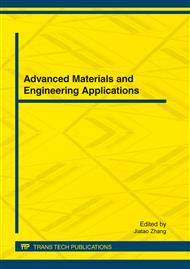p.77
p.82
p.88
p.94
p.100
p.105
p.113
p.121
p.128
Fracture Resistance of Inter-Joined Zirconia Abutment of Dental Implant System with Injection Molding Technique
Abstract:
Objectives: Zirconia powder in nanometers can be fabricated into inter-joined abutment of detal implant system with the injection shaping technique. This study was to detect the resistance of inter-joined zirconia abutment with different angle loading for clinical applications. Materials and Methods: The inter-joined abutments were shaped with the technique of injection of zirconia powder in nanometers. Sixty 0sstem GSⅡ5.0mm×10mm implants were used with 30 zirconia abutments and 30 0sstem GSⅡtitanium abutments for fixation using 40N torque force. The loading applications included 90°, 30°, 0° formed by the long axis of abutments and pressure head of universal test machine. The fracture resistances of zirconia and titanium abutments were documented and analyzed. Results: The inter-joined zirconia abutments were assembled to the 0sstem GSⅡimplants succssfully. In the 90° loading mode, the fracture resistance of zirconia abutment group and titanium abutment group were 301.46±15.38N、736.36±120.10N respectively. And those in the 30°groups were 434.66±36.07N、1073.12±73.96N correspondingly. Significant difference in the two groups was found through T Test. No damage on the abutments of the two groups but S-shaped bending on the implants was found when the 0° loading was 1300~2000N. Conclusions: Through the assembly of Zirconia abutments and implants, all the components presented sufficient resistance acquired for the clinical application under loadings with different angle.
Info:
Periodical:
Pages:
100-104
Citation:
Online since:
March 2012
Authors:
Price:
Сopyright:
© 2012 Trans Tech Publications Ltd. All Rights Reserved
Share:
Citation:


